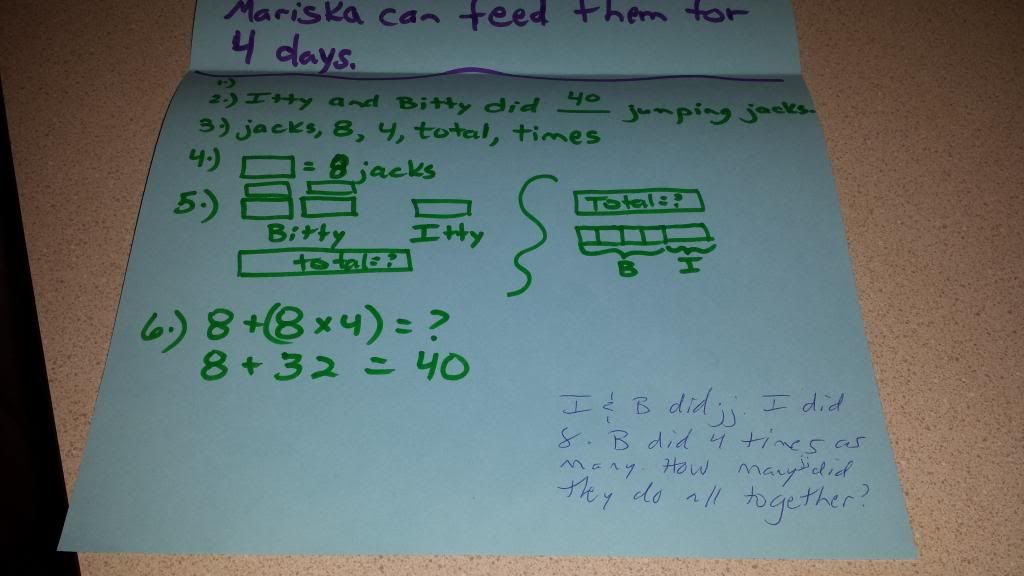Tuesday, June 10, 2014
Tried it Tuesday - Singapore Math
I'm joining in on Holly's Tried it Tuesday linky party.
Have you heard of this new math model? Our school had a staff development on Singapore Math last year, but it was after school until late, so I couldn't stay. Those who did take it said it was really great. So when I saw it offered in our summer workshop sessions through the county I jumped at it. Granted it was only an hour and a half instead of the full 8 hour session, but I managed to get some good stuff out of it!
The instructor focused mainly on problem solving using this method. There were seven steps to follow.
Give the students an exemplar such as:
Itty and Bitty were doing their daily jumping jacks. Itty did 8 of them. Bitty did 4 times as many as Itty. How many jumping jacks did they do all together?
The students work through the following steps on paper or in their math journals.
You can see my attempt at solving this problem from the class today.
There were some great points that I noticed today. Students write the #1 next to the story problem to prove that they've read the entire problem first.
For #3 when they are trying to find the most important things, help them see that people's names or other extraneous information isn't necessary to solve the problem.
#4 when deciding on what 'unit' to pick as a representation in your drawing, you can only use information gathered from the actual story problem. Keep in mind that 'unit' DOES NOT always equal one. In subtraction problems 'unit' could stand for the whole amount.
#5 you can see me drawing bars out to solve and then 'adjusting them' on the right hand side to put them together into more of a bar model approach.
If students give you a three addend equation, like in #6, discuss with them which of the steps do they want to do first. Then explain how to use parenthesis to show the reader what to do first.
Students are then graded using a rubric where they get one point for each accurately followed step. They receive a 5 for following all directions correctly. They would receive only a 1 if they just list the answer as 40. So they can still get points even if they do not arrive at a correct answer. The effort is still rewarded.
I like this idea and can't wait to try it with my new students!
Disclaimer: I understand my knowledge of this is very rudimentary, so if y'all have used this and have tips, tricks, and/or suggestions I'd love to hear them. Comment, comment, comment.




No comments:
Post a Comment